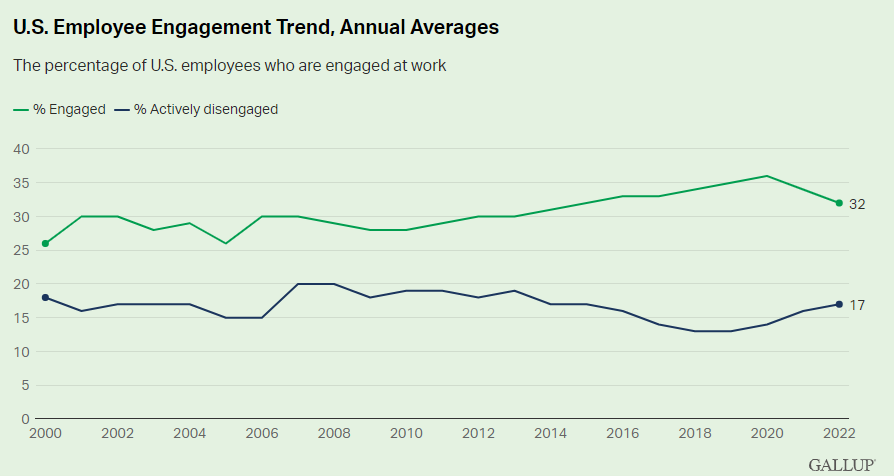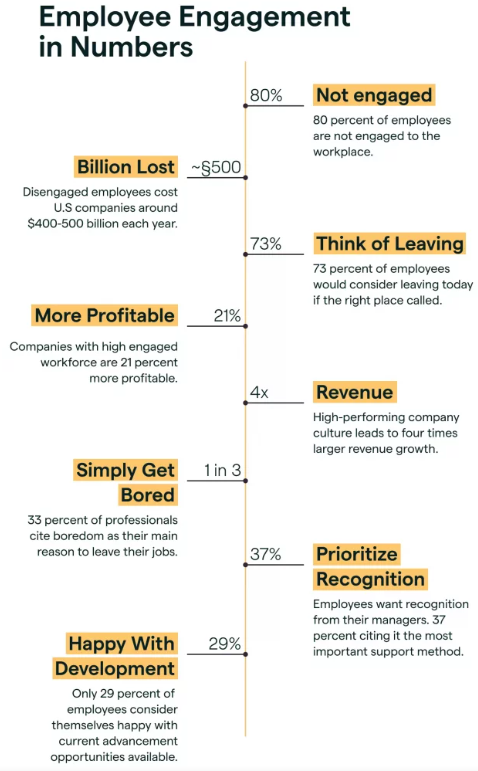If you have ever worked in a corporate environment, you may have heard the old saying that your number one job function is to not get fired. I first heard this expressed to me by an old acquittance named Charlie who ended up retiring with a pension from the same company he worked for since his early 20’s. And when I say work, well, Charlie was true to his advice. Charlie never quit but he never got fired either.
One of the biggest business buzz-terms to hit recently is “QUIET QUITTING.” Ever heard of it? If not, it is simply a term for employees who do the absolute minimum amount of work needed to not get fired…typically from a fulltime job. No more extra work, no more bucking for promotion, and no more going above and beyond at your own expense. But contrary to the name of this term, most people are not “quitting” – but rather deciding to do only what their job requires and nothing else. Or, in the words of many TikTok users, “not letting work define your life.”
Now, before you start discounting this trend as something that will soon go away, you need to consider the following:
- Labor force participation rates in the US continues at a record low, despite personal savings rates which continue to rapidly decline.
- There are still twice as many job openings as people looking for jobs, which means we are a long way off from equilibrium which puts employer power on par with employee power.
- US labor productivity rates have recently declined at its fastest pace recorded since the Labor Department started tracking this number in 1948.
- Only around 1/3 of US employees indicate they are active “engaged” in their work while around 17% are activity disengaged. In short, nearly 2/3’s of US workers simply don’t care enough to work beyond “quietly quitting.”
Of all of these numbers, the most troubling for employers may be the lack of employee engagement at work – and not for the reasons you might think. In fact, the percentage of “engaged” workers has remained relatively the same for over the past decade. So why would this now be a concern? Because workers NOW have alternative means of working and making additional income that does not always require them to leave their jobs to do it.

Here are a few things to consider from my most recent book: iQUIT! – How The World Of Work is Changing and What it Means for You…
- There were approximately 55 million US workers (or 34 percent of the US workforce) doing “gig” work in 2020—of which 44 percent do so as their primary source of income. All of this is producing around $350 billion worth of work in the US alone.
- By 2027, Statista estimates that nearly half the US population will have engaged in gig work.
- In 2020, the gig economy grew by 33 percent, expanding 8.25 times faster than the US economy as a whole.
- 50 percent of US businesses indicate that they have already hired gig workers during the COVID-19 pandemic and 80 percent of US businesses plan to hire gig workers again after the pandemic ends.
- There are over 1 billion gig workers worldwide and growing.
And that is exactly what millions of Americans now do—they keep their full-time “job,” doing as little as possible to not get fired, while working gigs on the side. They commonly do this to make more money, keep from getting bored, work on things they are more passionate about, and to not have to worry about the severe potential downsides of unexpected layoffs. The total number of people currently doing this is still a little foggy, and for obvious reasons; who wants to admit to others that they are really doing this?
But according to recent studies, we do know that around 8 percent of US workers have indicated they work more than two jobs. This, of course, is based on the old definition of what a “job” is. But if we already know that roughly one-third of America’s 156 million workers have recently done a gig and 56 percent indicate that this was not their primary income, well, that tells me there could be upward of 29 million US workers who may be playing this game with their full-time employers. And based on my own experiences, my gut is telling me that this number is actually low.
So, if you are an employer, how can you help combat this trend of “quiet quitting” and limit the impacts on your business or organization? In my book, we discuss a number of ways to help accomplish this but one of the first places any organization should start is by better understanding and maximizing employee engagement.
HOW TO BUILD EMPLOYEE ENGAGEMENT

As previously discussed, nearly 2/3rds of US workers indicated that they are not “engaged” in their jobs. As displayed in the adjacent chart, this lack of engagement leads to higher employee (and customer) turnover, lower productivity, lower profits, lower revenues, and lower business growth. So important is this one issue that 71% of executives indicate that employee engagement is critical to their success.
So, if employee engagement is so important yet is still so lacking in most organizations today, where should you begin in addressing it? In my recent book, we start by addressing this question from the framework of “why people work” to help understand the basis for engagement (or a lack thereof).
The questions surrounding why people work have been studied and debated for over a century. The most common explanations as to the motivations behind why people work typically include the following: getting paid money, social interaction, recognition, using and building skills, job satisfaction, having responsibility, contributing to society, etc. But the real reasons why we work, and don’t work, were brought to light only recently.
In the 1980s, two professors from the University of Rochester, Edward Deci and Richard Ryan, were able to distinguish the six main reasons why people work, which include: play, purpose, potential, emotional pressure, economic pressure, and inertia. What made their research so impactful was that they found the first three motives (play, purpose, and potential) tend to increase performance at work while the last three (emotional pressure, economic pressure, and inertia) tend to hurt it. As a result of these findings, smart and successful organizations now try to promote the first three while minimizing the last three, which is commonly reflected in their values and culture.
The reason why this is so fundamentally important to understand is it provides the basis for all success and failures in employee engagement within each company. In short, by categorizing each motivation (or a lack thereof) for your employees in each of these three main areas of why we work, you can better pinpoint exactly where you have an employee engagement problem/s in your company and how to address them.
For example, inertia is one of the biggest killers of employee motivation and is the antithesis of employee purpose and potential which are the leading drivers of motivation and engagement. Based on this knowledge, ask yourself the following questions:
- Can EVERY employee CLEARLY provide a desirable career path for THEM within YOUR organization over the next 3-5 years?
- Can every employee manager CLEARLY define the primary motivation/s for work for each of their direct reports?
If you answered “no” to each of these fundamental questions, then you have a problem with inertia and will help lead to a decrease your employee engagement. Think about it: how can you truly address employee engagement if you don’t even know what motivates each of your employees? And what about your top-performing employees – those most organizations cannot afford to lose? Without regularly meeting with them at least every 3-6 months, how do you know what drives them to continue to want to work for you? Is it money, freedom, titles, creativity, awards, etc.?
Prior to COVID-19, I always made sure to take my top people out to dinner at least once every 3 months so I could continue to answer this question for myself. But how many organizations that have become largely virtual now make such an effort? And if you have your people working in part or in whole virtually, doesn’t it make more sense now more than ever to have these non-virtual deep-dives with your employees before you lose them and wonder why?
This is simply one example of many that I help employers think through and address in iQUIT!.
So, in summary, as I first witnessed with Charlie and others like him many years ago, Quite Quitting is not really new and it is not going away either. The sooner employers realize this the better. The problem now ultimately comes down to competing opportunities and with the recent proliferation of employee enablement tools and alternative work vehicles like Gig work, your employees will continue to start thinking beyond their full-time jobs which means you can either do the same or if you want to keep your full-time people from quietly quitting on you, start addressing your employee engagement problems now.
ORDER YOUR COPY TODAY: https://www.amazon.com/dp/0990504611/



Comments are closed